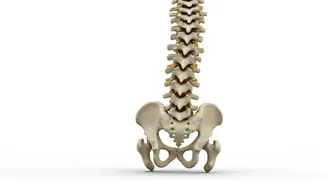Understanding Spinal Health
Spinal health is more crucial than we often realize; it underpins our mobility and overall well-being. It's the central pillar of our body, a complex structure
of bones, joints, nerves, and muscles. A healthy spine allows effortless movement and protects the delicate spinal cord. Conversely, issues like poor posture, improper lifting, or lack of exercise can lead to pain, stiffness, and even more severe problems. Spinal health extends beyond just avoiding back pain. A well-cared-for spine positively influences our balance, flexibility, and even organ function. Ignoring spinal health can result in chronic pain, limited mobility, and decreased quality of life. Making informed choices about our posture, activities, and lifestyle is essential. Simple steps like regular stretching, maintaining correct posture, and staying active contribute significantly to preserving spinal health. Prioritizing prevention is key, as many spinal problems are avoidable with the right approach.
Posture: The Foundation
Posture is pivotal to spinal health and often overlooked. It's not just about how we look but how our body aligns to support itself. Whether standing, sitting, or moving, good posture ensures the spine maintains its natural curves, distributing weight evenly. Slouching or hunching, in contrast, puts undue stress on the spine, leading to muscle strain, joint pain, and potential long-term damage. In our increasingly sedentary lifestyles, the impact of poor posture is magnified. Hours spent at desks or looking at screens without mindful positioning can seriously affect spinal health. To improve posture, start by being aware of your body's position. Imagine a string pulling you upwards from the crown of your head, keeping your shoulders relaxed and your core engaged. When sitting, use a chair that supports your lower back and keep your feet flat on the floor or on a footrest. Regular posture checks, taking breaks to stretch, and ergonomic adjustments in your workspace can all make a significant difference. Conscious effort to correct posture becomes a habit. Good posture not only helps prevent back pain but also enhances breathing, energy levels, and overall confidence.
Exercise and Spine Care
Regular exercise is essential for maintaining a strong and healthy spine. It strengthens the muscles that support the spine, improving stability and reducing the risk of injury. Core strengthening exercises, such as planks and bridges, are beneficial as they stabilize the spine. Stretching exercises, including yoga and Pilates, improve flexibility and relieve tension in the back muscles. Engaging in low-impact activities like swimming or walking can further enhance spinal health without putting excessive strain on the joints. Maintaining a consistent exercise routine is crucial. The key to effective exercise for spine health is consistency and a holistic approach. It is about engaging different muscle groups, improving flexibility, and increasing overall strength. It’s also crucial to listen to your body and avoid overexertion, especially if you have a pre-existing condition. Consulting with a fitness professional or physical therapist can help design a customized exercise plan tailored to your needs and physical condition. A well-rounded exercise routine contributes not only to physical health but also helps to improve your mood and overall sense of well-being.
Lifestyle Adjustments Needed
Lifestyle plays a pivotal role in spinal health. Beyond exercise and posture, various lifestyle factors can either promote or hinder a healthy spine. Diet, sleep, and stress management are vital aspects of spinal health. A balanced diet rich in essential nutrients supports bone and muscle health. Sufficient sleep allows the body to repair and rejuvenate, promoting overall health. Managing stress through techniques like meditation or deep breathing reduces muscle tension and inflammation, which can affect the spine. The way you move your body daily, including how you lift objects and carry items, influences spinal health. Lifting heavy objects incorrectly can put significant strain on the back and increase the risk of injury. Learning the correct lifting techniques, such as bending at the knees and keeping the back straight, can make a significant difference. Reducing alcohol consumption and avoiding smoking positively influences overall health and spinal well-being. Focusing on a comprehensive approach, combining diet, exercise, stress management, and mindful movements, optimizes spinal health and promotes a higher quality of life.
Preventing Surgical Intervention
The main goal is to prevent surgical intervention through proactive measures and informed choices. Spinal surgery is a serious step, often reserved for severe cases that haven't responded to other treatments. The emphasis on prevention is aimed at avoiding the need for such interventions. Prevention-focused strategies involve understanding risk factors, taking proactive steps to maintain spinal health, and seeking early intervention when issues arise. Ignoring early warning signs like persistent back pain or stiffness can allow problems to worsen, potentially leading to the need for more invasive treatments. Regular check-ups with a healthcare provider can identify potential issues early on. Non-surgical treatments like physical therapy, medication, and lifestyle adjustments often effectively manage spinal problems. This article seeks to empower individuals to take control of their spinal health and reduce the need for surgery. By emphasizing the importance of posture, exercise, lifestyle modifications, and early intervention, the goal is to promote a proactive, preventative approach, ensuring long-term spinal well-being and a better quality of life. The focus is always on fostering healthy habits to prevent issues before they escalate.







